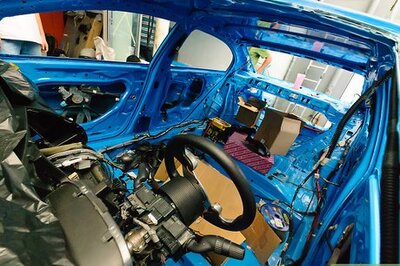
views
In 2002, the Ghazipur landfill was deemed unsafe. After years of failed attempts, rejected plans leading to the landfill nearly overshadowing the Taj Mahal and Qutub Minar, the Prime Minister’s Office has finally stepped in to grapple with the issue that has plagued Delhi for decades.
In 2002, the Ghazipur landfill, along with Okhla and Bhalswa, crossed the safety limit of 20 metres. Two people died in 2017, after a section of the precarious mountain of waste – spread over an area of 40 football fields with 65 meters of height–collapsed.
The problem has, as TERI noted in a report as early as 2002, been one of inadequate systems aimed at “either minimising or recycling waste”. The PMO has tasked the principal scientific advisor to the government, who advises the PM through a Science, Technology and Innovation Advisory Council, to answer the question that has plagued the capital for years. The two challenges: removal and valorisation, said sources. The request for proposal (RFP) has allotted an 18-month time period, with the “most ambitious expected outcome” of a zero-landfill and global experts will be roped in, officials said.
An Ministry of Environment, Forest and Climate Change (MoEF) official told News18, “One of the key issues is that the landfill is a major source of greenhouse gases and tackling Ghazipur can pave the way for the larger problem of waste that is soon going to turn into a major crisis for the country.”
A New Plan: Waste as Resource
The plan to mitigate the crisis at Ghazipur, particularly the emphasis on the valorisation of waste – a process of converting waste materials into more useful products including chemicals, materials and fuels – is key, officials said.
The Economic Survey 2019, released earlier this month, has also emphasised on using India’s limited resources in a sustainable manner by minimizing waste, both in terms of consumption and production while simultaneously setting up a “dynamic recycling industry” that would create jobs and resources.
As of 2019, India accounted for 7.2 per cent consumption of globally extracted raw materials, but its “rate of recycling is very low as compared to other developed economies”. The survey, for instance, estimated that “$1 billion worth of gold can be extracted with mining of urban e-waste”, 14 lakh jobs could be created from e-waste management policies and “nearly $2.7 billion opportunity can be created from the extraction of eight million tonnes of steel from the end of life vehicles.”
Much of this potential has been lying virtually untapped since the landfill started in 1984, said an official of the CPCB. “There is virtually no segregation at source of waste in India. That is the first step to any effective waste management country. That greatly comes in the way of any technological system to deal with the waste,” the official said.
Dumped Plans
Since 2004, when the National Capital Region Planning Board (NCRPB) argued for a new 28 square kilometre of landfill space by 2021, and a 100 square kilometre by 2050, the conversation about the landfill followed a familiar trajectory.
A former Delhi government environment secretary, now posted with the union government summarised, “The politicians wanted a quick fix solution. To move the waste to a new location. So for that, they needed land. But in Delhi, land is scarce. So that leaves out areas in far-flung areas, or in ecologically sensitive areas. And if anyone lives in the area, there are protests and it gets stalled.”
This, the official added, has repeated itself again and again in the past years. From the Delhi government failing to convince its counterparts in UP, Haryana and Rajasthan to give land, to the 2008 proposal to dump waste at the Bhati Mine, in the protected Asola Bhati Wildlife Sanctuary being rejected, to another landfill proposal in Jaitpur being abandoned after opposition from residents and legislators.
More recently, Lok Sabha Parliamentary Standing Committee on Urban Development report in 2014 chastised the DDA for not dealing with the problem of “monstrous trash mountains leaching out toxic liquids and emanating noxious fumes… as they grow larger every day”. The DDA’s response was that in Delhi “land is scarce and a highly-priced commodity” and thus finding a new landfill site was “not an easy task”.
An official of the Delhi government’s Environment Ministry, however, maintained that the PMO’s plan provided a glimmer of hope since it appeared to stray from the familiar pitfalls of trying to find land for an alternative landfill site.
“Environmentalists for decades have been asking for a solution that is sustainable. Reducing waste, trying to find value in it and not thinking of it as a problem that can be dumped and forgotten about is the way to go forward,” said the official.




















Comments
0 comment